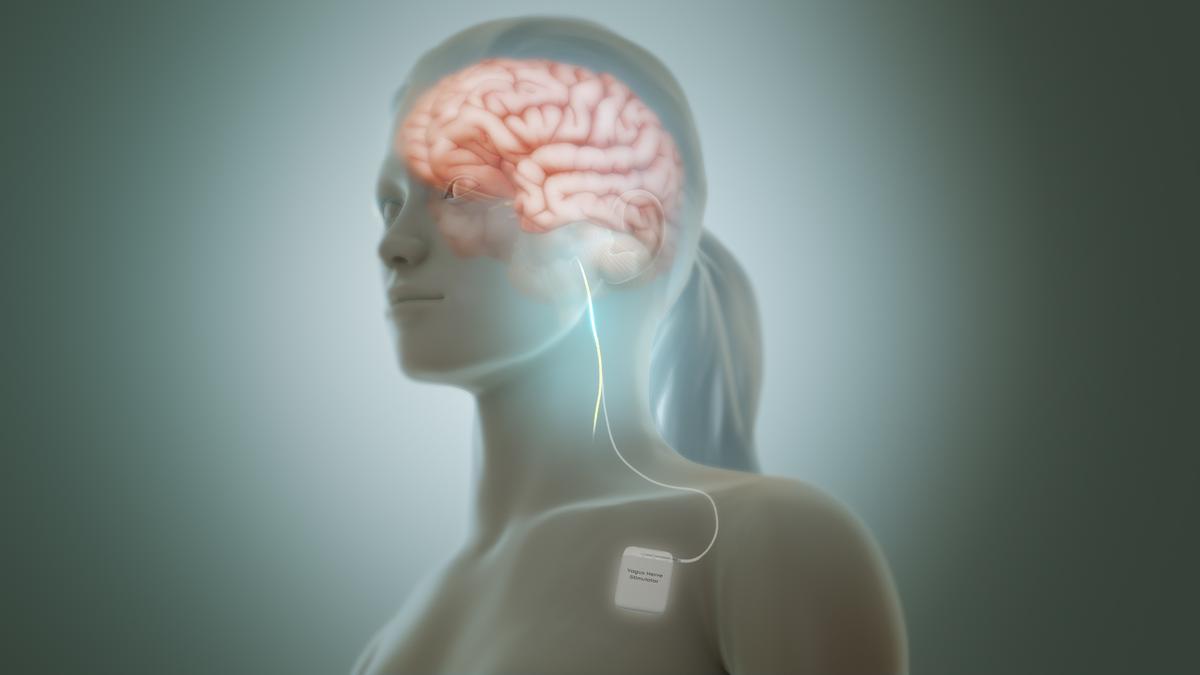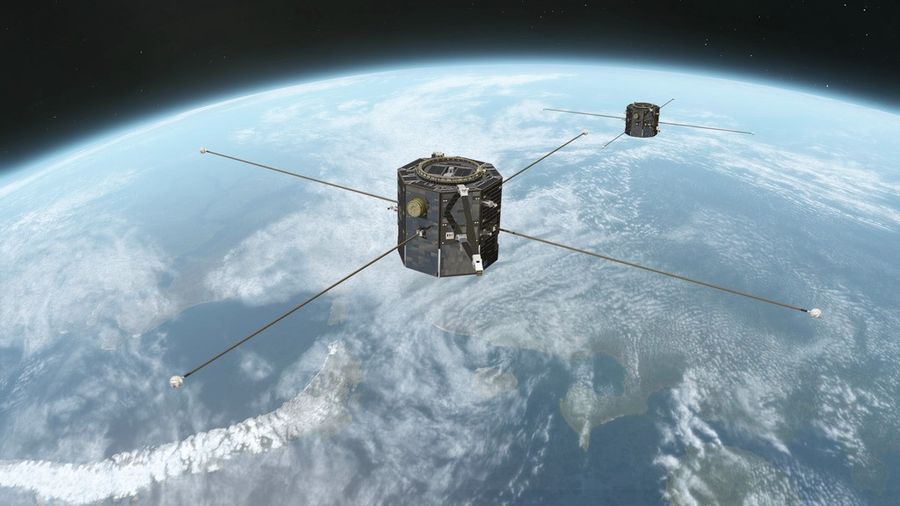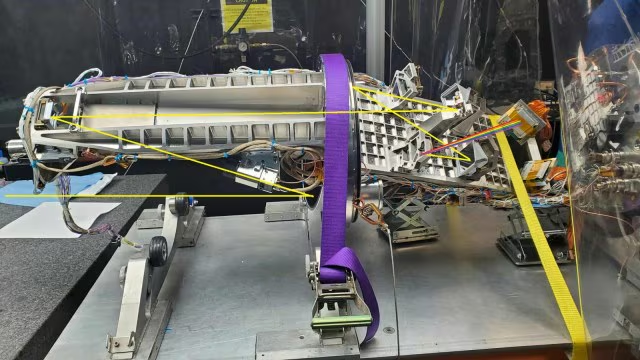Description
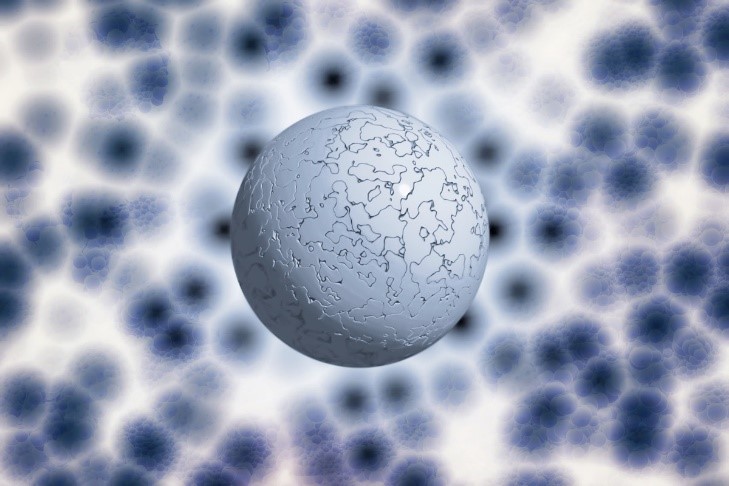
Disclaimer: Copyright infringement not intended.
Context
- For the first time, astronomers have assembled a glowing portrait of the Milky Way made up of invisible “Ghost Particles” detected by a telescope embedded in Antarctica’s ice.
- The so-called ghost particles are
Details`
- The new image of our Milky Way shows the Neutrinos surround us in vast quantities, but usually shoot straight through Earth without us being able to detect them at all.
- Now scientists using a specially created observatory have been able to actually observe them, using thousands of sensors buried deep under a cubic kilometre of ice and attached together.
Neutrinos
About
- A neutrino is a subatomic particle but it is not part of the atom.
Discovery and History
- Wolfgang Pauli proposed the existence of the neutrino in 1930 as a means of conservation of energy in beta decay.
- Both Pauli and Enrico Fermi referred to the hypothetical particle as a neutrino in scientific conferences in 1932 and 1933.
Abundance
- Neutrinos are one of the most abundant particles in the universe.
Detection
- Though theorized in the 1930s Neutrinos were first detected in the 1950s.
- Because they have very little interaction with matter, however, they are incredibly difficult to detect.
- Neutrinos maintain a mysterious aura, and are often dubbed "ghost particles" – as they just zip through the Earth without us even noticing them.
- The first neutrino found in nature was in 1965 at a chamber in the East Rand gold mine in South Africa, 3 kilometers underground.
- At present, the largest neutrino detector is Super Kamiokande-III in Japan.
Nature
- Neutrinos are very similar to an electron, but has no electrical charge and a very small mass, which might even be zero and they spin half.
- It interacts very weakly with other matter particles.
Nuclear Forces
- Nuclear forces treat electrons and neutrinos identically; neither participate in the strong nuclear force, but both participate equally in the weak nuclear force.
The phenomenon of Neutrino Oscillation
- Neutrinos come in three types or “flavours” – electron neutrino, tau neutrino and muon neutrino.
- They can change from one flavor to another as they travel. This process is called neutrino oscillation and is an unusual quantum phenomenon.
- Takaaki Kajita and Arthur B. McDonald shared the 2015 Nobel Prize in Physics for discovering neutrino oscillations, proving that neutrinos have mass.
Source of Neutrinos
- Neutrinos come from the sun (solar neutrinos) and other stars, cosmic rays that come from beyond the solar system, and from the Big Bang from which our Universe originated. They can also be produced in the lab.
Atmospheric Neutrinos
- Atmospheric neutrinos are produced from cosmic rays which consist of protons and heavy nuclei. These collide with atmospheric molecules such as Nitrogen to give off pions and muons which further decay to produce neutrinos.
- Neutrinos are created by various radioactive decays; the following list is not exhaustive, but includes some of those processes:
-
- beta decay of atomic nuclei or hadrons,
- natural nuclear reactions such as those that take place in the core of a star
- artificial nuclear reactions in nuclear reactors, nuclear bombs, or particle accelerators
- during a supernova
- during the spin-down of a neutron star
- when cosmic rays or accelerated particle beams strike atoms.
- The majority of neutrinos which are detected about the Earth are from nuclear reactions inside the Sun.
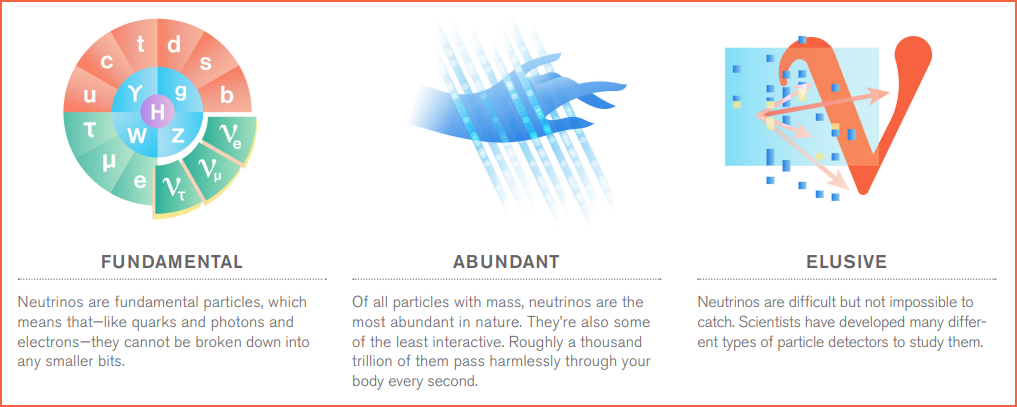
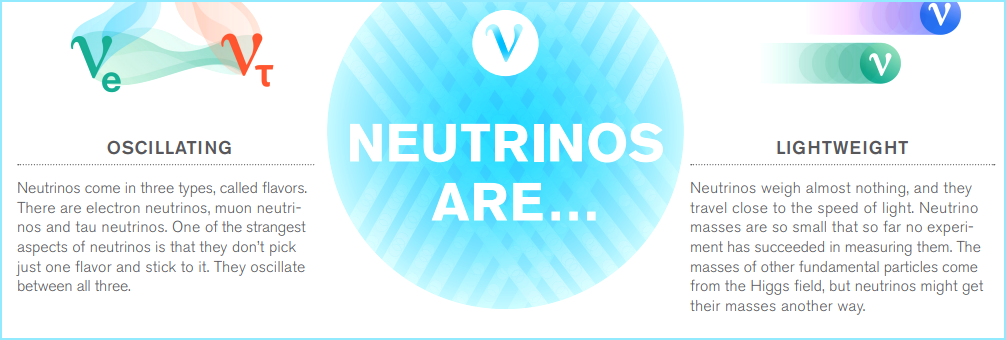
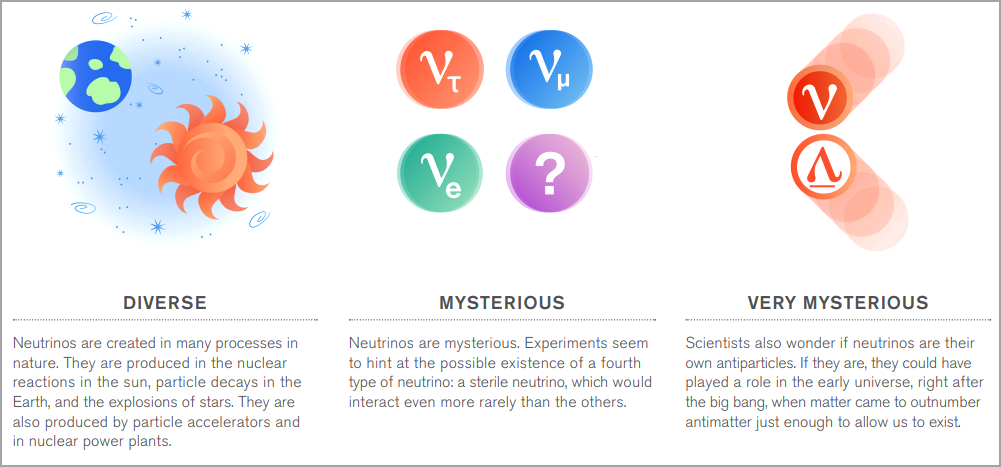
Practical Applications
- The low mass and neutral charge of a neutrino make it perfect as a probe for exploring places other forms of radiation can’t penetrate. For example, neutrinos detect conditions inside the core of the Sun because most of them pass through the intensely dense material. Meanwhile photons (light) get blocked. Other targets for neutrino probes include the Earth’s core, the galactic core of the Milky Way, and supernovae.
- In 2012, scientists sent the first message using neutrinos through 780 feet of rock. Theoretically, neutrinos allow for the transmission of binary messages through the densest matter at nearly the speed of light.
- Because neutrinos do not decay, detecting one and following its path lets scientists locate extremely distant objects in space. Otherwise, the study of neutrinos is vital for understanding dark matter and extending the Standard Model of particle physics.
Neutrino Facts
- A neutrino has a neutral electrical charge and very small mass. Its mass is estimated as at least six orders of magnitude smaller than that of the electron, which has a mass of 9.1×10-31 kilograms. The exact mass of a neutrino has yet to be measured.
- Neutrinos travel at speeds approaching the speed of light.
- A neutrino only reacts to gravity and the weak nuclear force (weak interaction). Because of this, it very rarely interacts with matter.
- For example, billions of neutrinos pass through your body every day. Despite this, scientists estimate only one solar neutrino (from our Sun) interacts with a person throughout their entire lifetime.
- At present, there are three known “flavors” of neutrinos: electron, muon, and tau. A neutrino oscillates between these three flavors. There are also antimatter particles: anti-electron (antineutrino), anti-muon, and anti-tau.
- There may be other neutrino flavors. For example, scientists predict the existence of the sterile neutrino. A sterile neutrino interacts only with gravity, not the weak nuclear force.
- Neutrinos are extremely common. They come from nuclear reactions. Sources include the Sun and other stars, supernovae, nuclear decay, fission, and fusion.
- Like neutrons, neutrinos induce nuclear fission of heavy nuclei. Only neutrino fission of deuterium has been observed in labs, but the process likely occurs within stars and influences the isotope abundance of elements.
- Scientists estimate between 2% to 3% of the Sun’s radiation takes the form of neutrinos. About 99% of a supernova’s energy gets released as neutrinos.
- Researchers see the Sun, day or night, using neutrinos. They pass through the Earth when it is night time. Based on neutrino images, astronomers know nuclear reactions only occur in the Sun’s core, which is its inner 20-25%.
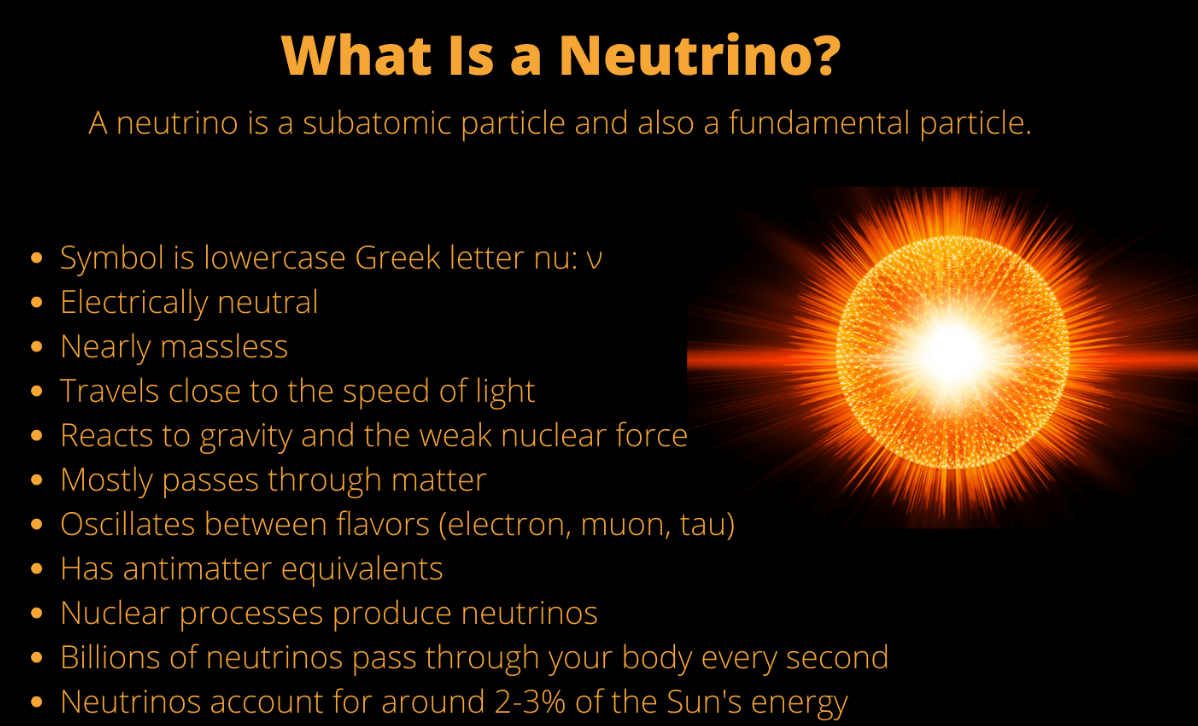
|
PRACTICE QUESTION
Q. Consider the following statements with respect to Neutrinos:
1. A neutrino only reacts to gravity and the strong nuclear force (strong interaction).
2. Neutrinos induce nuclear fission of heavy nuclei.
3. Neutrinos travel at speeds approaching the speed of light.
4. Neutrinos cannot be produced in the lab.
Which of the above statements is/are incorrect?
(a) 1 and 3 only
(b) 1 and 4 only
(c) 2, 3, and 4 only
(d) All of the above.
Correct Answer: (b) 1 and 4 only
|
https://www.independent.co.uk/space/neutrino-ghost-particle-galaxy-milky-way-b2366654.html











